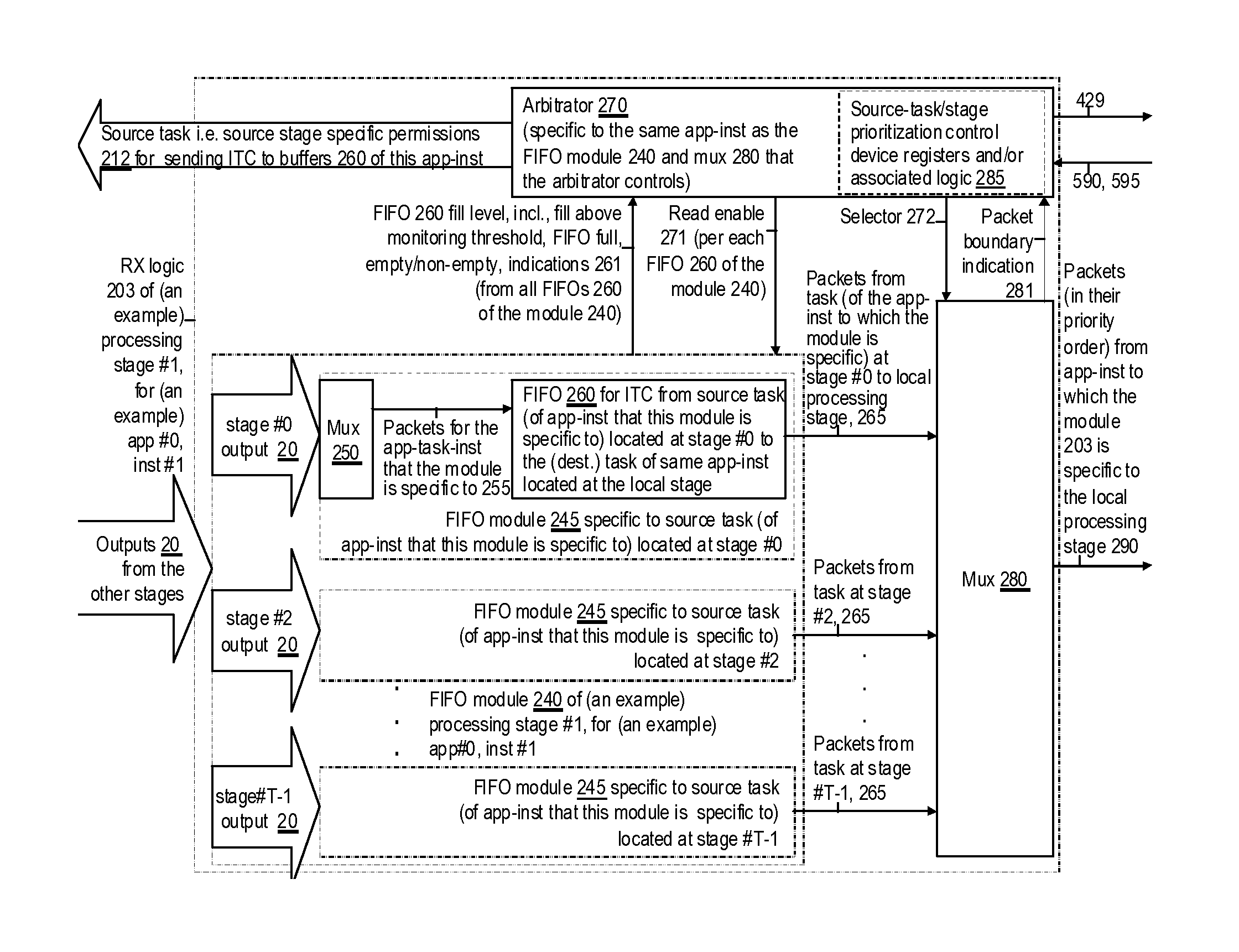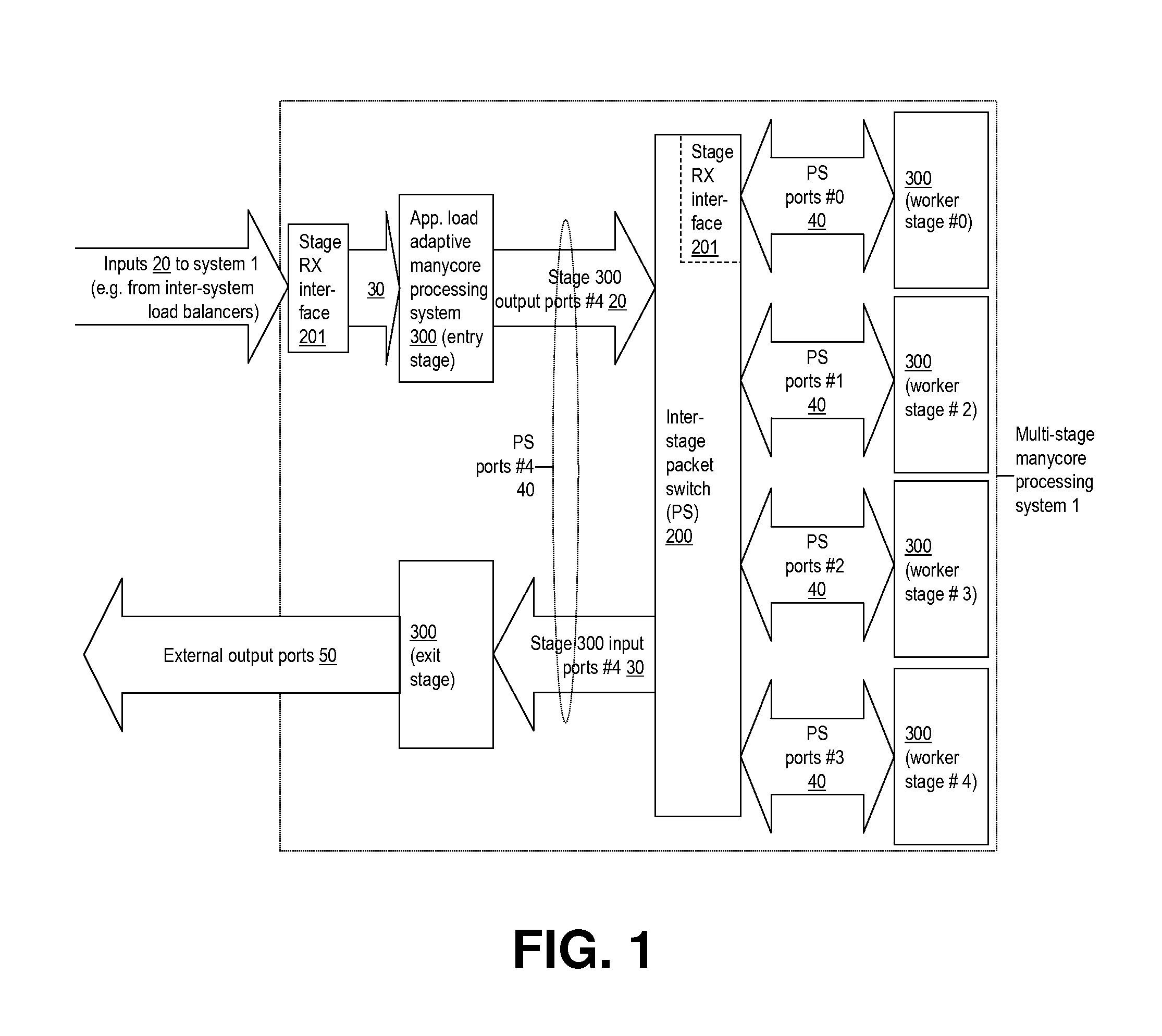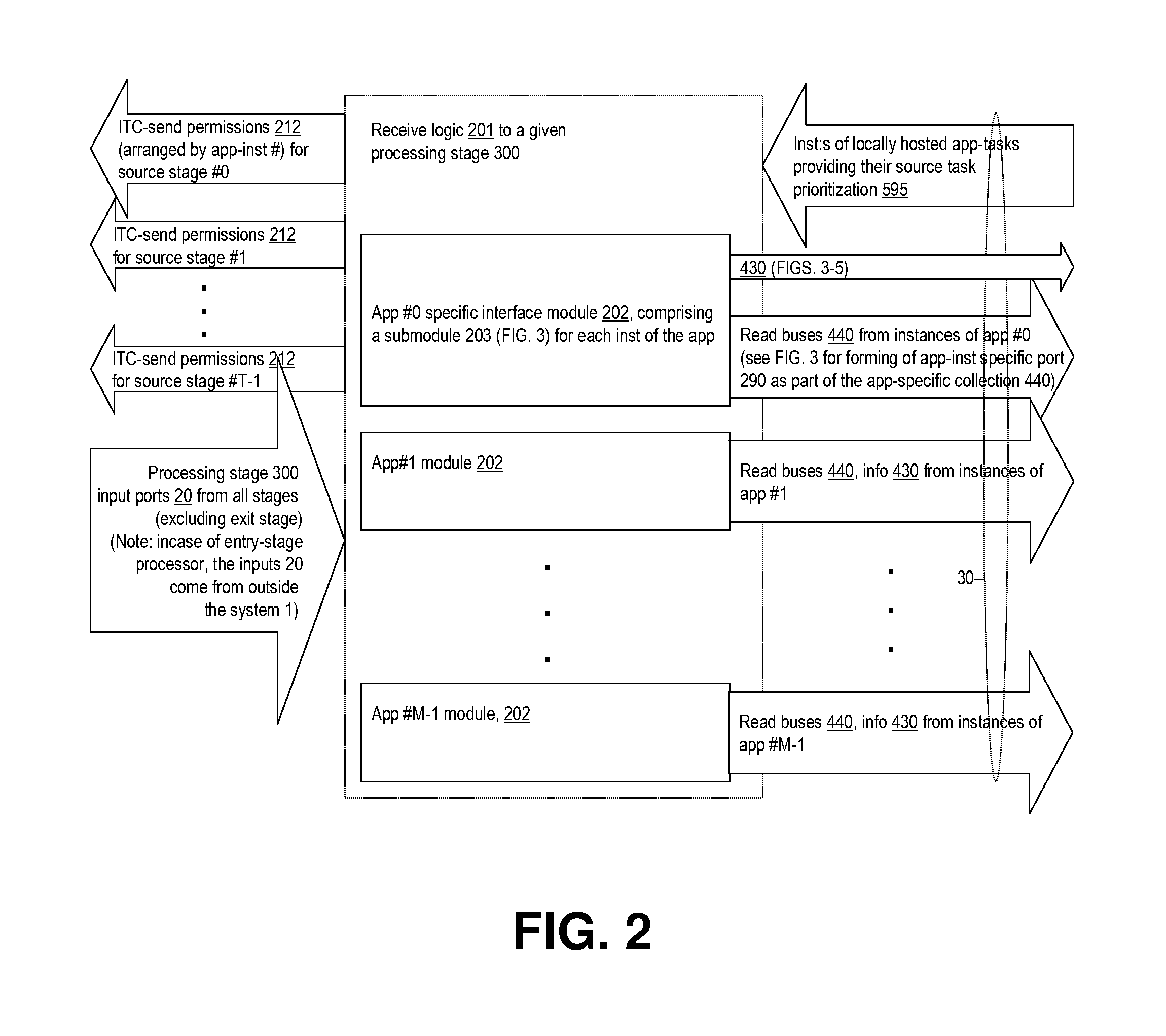Program execution optimization for multi-stage manycore processors
a multi-core processor and program execution technology, applied in the field of information processing, can solve the problems of system software and the challenge of scaling conventional systems in this manner, and achieve the effect of effective inter-application isolation and reducing execution priority
- Summary
- Abstract
- Description
- Claims
- Application Information
AI Technical Summary
Benefits of technology
Problems solved by technology
Method used
Image
Examples
Embodiment Construction
[0033]FIGS. and related descriptions below provide specifications for embodiments and aspects of hardware-logic based systems and methods for inter-task communications (ITC) with destination task defined source task prioritization, for architecture-based application performance isolation for ITC in multi-stage manycore data processing system, as well as for input data availability based prioritization of instances of a given application for execution on processing cores of a processing stage.
[0034]The invention is described herein in further detail by illustrating the novel concepts in reference to the drawings. General symbols and notations used in the drawings:[0035]Boxes indicate a functional module comprising digital hardware logic.[0036]Arrows indicate a digital signal flow. A signal flow may comprise one or more parallel bit wires. The direction of an arrow indicates the direction of primary flow of information associated with it with regards to discussion of the system functi...
PUM
 Login to View More
Login to View More Abstract
Description
Claims
Application Information
 Login to View More
Login to View More - R&D
- Intellectual Property
- Life Sciences
- Materials
- Tech Scout
- Unparalleled Data Quality
- Higher Quality Content
- 60% Fewer Hallucinations
Browse by: Latest US Patents, China's latest patents, Technical Efficacy Thesaurus, Application Domain, Technology Topic, Popular Technical Reports.
© 2025 PatSnap. All rights reserved.Legal|Privacy policy|Modern Slavery Act Transparency Statement|Sitemap|About US| Contact US: help@patsnap.com



